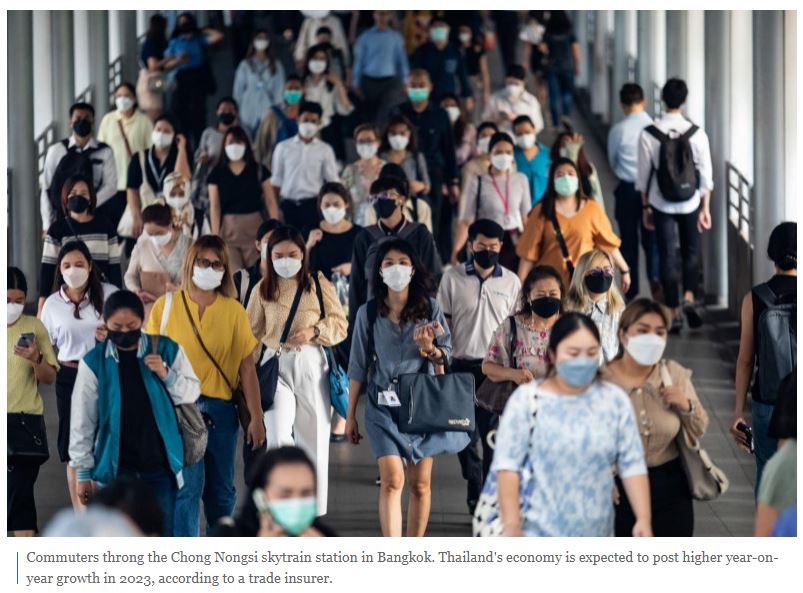Bleak economic view for Asia
Thailand and China are among the lone bright spots in Asia, projected to have higher real GDP growth this year even as the rest of the region is battered by unfavourable global economic conditions and geopolitical tensions, according to global trade insurer Atradius.
The insurer’s recent “Regional Economic Outlook Asia” report indicated the regional economic recovery was “clearly losing momentum” because of tighter financial conditions, inflation, a weak global economic environment and geopolitical tensions.
While China and Thailand are expected to post higher year-on-year growth in 2023, economies in the rest of the region are estimated to take a step back as they try to shake off tight financial conditions and weak external demand, Atradius noted.
“Asian economies are on course for modest growth this year,” said Bert Burger, principal economist at the Amsterdam-based company.
Growth in Japan and South Korea would be muted at 0.7% and 0.8%, respectively, as high inflation dents their recovery, he said.
India is set to be the fastest-growing economy in Asia this year and next, with estimated expansion of 8% and 6.8%, respectively, thanks to a strong domestic economy and improving business environment.
“With their increasingly robust economies and financial systems, the five largest emerging markets in Southeast Asia have remained resilient against recent external shocks, making them more likely to benefit from the global supply chain diversification trend,” said Mr Burger.
The Philippines is poised to grow the fastest in the region at 4.1%, followed by 4% for both Thailand and Vietnam.
Indonesia will be a laggard, growing 3.6% this year.
“Thailand’s resurgence as a preferred holiday destination will boost tourism revenues and push growth to 4%, up from 2.6% in 2022,” he said.
In China, weak export demand from developed economies and a struggling real estate sector are expected to cap growth at no higher than 4.5% this year, exceeding the 3% rate posted in 2022, according to the report.
“The Chinese economy is performing well in the short term, but faces a structural growth slowdown. Its ageing population, a human capital mismatch, low productivity growth, supply chain changes and geopolitical rivalry are the main reasons why China is at risk of falling into the so-called middle-income trap,” the report noted.
While the diversification of supply chains, triggered by the pandemic and US-China tensions, has benefited countries such as India, Vietnam, Malaysia and Thailand, Mr Burger cautioned that a broadening of this trend may risk a sharp geo-economic fragmentation of financial and trade flows.
Russia’s invasion of Ukraine and ensuing sanctions on the country have led to increased uncertainty around future trade relations.
“The potential consequences of a fragmentation scenario — reduced investments, jobs and growth — are expected to result in large economic losses for Asia because of its central role in global manufacturing,” he said.
However, the economic headwinds are on course to weaken over the coming months as the impact of China’s reopening cascades through the region.
Atradius expects the recovery to pick up momentum in 2024, with Indonesia’s growth anticipated to climb to 5.5% next year, while Thai growth is forecast at 4.4%, the report indicated.
Source: https://www.bangkokpost.com/business/2525391/bleak-economic-view-for-asia


 Thailand
Thailand




